Uncategorized
Intercultural Storytelling – A Storified Chronicle
IDSP 2016 Fellowship Showcase
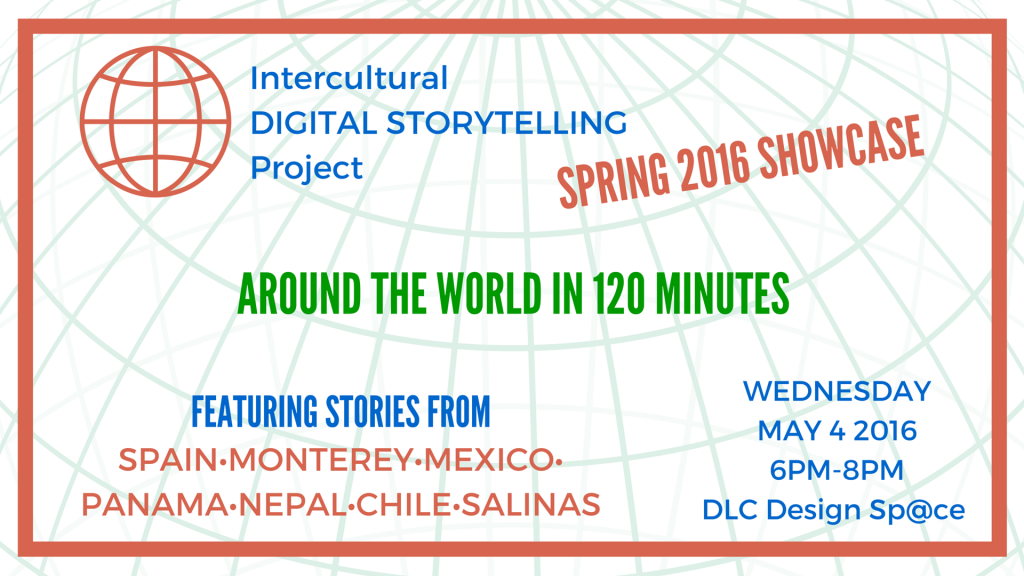 The art of story has been around for centuries because it’s a fundamental way we make meaning as humans. It’s the way we reflect, share, and learn both individually and collectively. Digital tools have made this process easier and more accessible, adding dimensions to the storytelling process and avenues through which to share locally and globally.
The art of story has been around for centuries because it’s a fundamental way we make meaning as humans. It’s the way we reflect, share, and learn both individually and collectively. Digital tools have made this process easier and more accessible, adding dimensions to the storytelling process and avenues through which to share locally and globally.
The six #IDSP16 Fellows invite you to share in their experiences around the world through a screening of their digital stories in a community showcase on May 4th, 2016 from 6-8pm at the DLC Design Space. This interactive evening will offer a glimpse into storytelling and the fellowship process where reflection, immersion, inductive research, peer mentorship and digital media merge into story. Come celebrate with us, experience some amazing stories, and interact with your peers. Light snacks will be served.
The Intercultur al Digital Storytelling Project, also known as #IDSP, was designed for students at the Middlebury Institute of International Studies at Monterey (MIIS) involved in immersive learning activities affiliated with their academic experiences. The IDSP Fellowship experience was designed to around 5 key competencies: immersive learning, inductive research, peer mentorship, reflection, and digital media. The year-long timeline supports fellows in by guiding them through the development of these skills.
al Digital Storytelling Project, also known as #IDSP, was designed for students at the Middlebury Institute of International Studies at Monterey (MIIS) involved in immersive learning activities affiliated with their academic experiences. The IDSP Fellowship experience was designed to around 5 key competencies: immersive learning, inductive research, peer mentorship, reflection, and digital media. The year-long timeline supports fellows in by guiding them through the development of these skills.
IDSP hosts J-Term Storytelling Night at the DLC
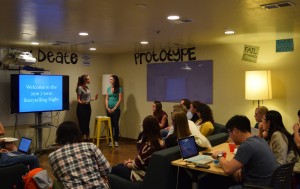
On Tuesday February 16th, Katie Barthelow and Anna Santos of the Intercultural Digital Storytelling Project (IDSP) hosted an open-mic style, storytelling night at the DLC. Students who participated in immersive learning experiences were invited to share their funny, happy, serious, goofy, or insightful stories. Current and perspective students, faculty, and staff from different departments at MIIS attended the event.
Students performed stories about their experiences doing fieldwork in Nepal and Peru, as well as stories about independent projects and activities.
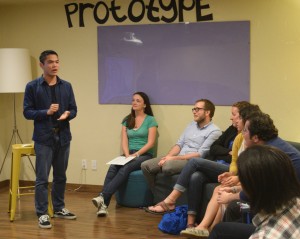
Immersive learning can involve a lot of uncomfortable moments, insightful revelations, culture shock, and personal change. Processing those moments through storytelling is not only beneficial for the storyteller but is also beneficial in creating a community with greater sharing, support, and communication.
The J-Term Storytelling Night is part of an initiative to facilitate greater communication and sharing of the unique student projects and experiences of MIIS students.
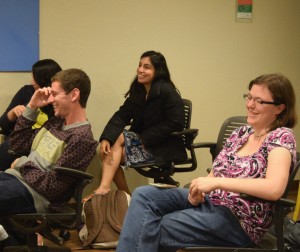 The Intercultural Digital Storytelling Project (IDSP) began as an opportunity for students to participate in a fellowship around intercultural immersive learning experiences. The digital storytelling fellowship is the flagship program of IDSP, which currently has 7 fellows who are in the process of creating digital stories about their J-term experiences this Spring. One of IDSP’s Spring initiatives is to expand storytelling opportunities throughout the MIIS campus and beyond.
The Intercultural Digital Storytelling Project (IDSP) began as an opportunity for students to participate in a fellowship around intercultural immersive learning experiences. The digital storytelling fellowship is the flagship program of IDSP, which currently has 7 fellows who are in the process of creating digital stories about their J-term experiences this Spring. One of IDSP’s Spring initiatives is to expand storytelling opportunities throughout the MIIS campus and beyond.
J-term Storytelling Night
Come join us for a night of storytelling about J-term experiences. This will be an informal, open-mic inspired night where everyone is welcome to share. Sign up to tell a story the night of the event, and feel free to bring visual aids (photos, videos, etc) on a jump-drive to help tell your story. We hope to see you there!
IDSP Update: South Africa
By Taylor Robb-McCord; IEP student and IDSP16 fellow
For as long as I can remember, my dad has been the one herding our family into the car and insisting on getting to the airport at least two hours before any flight. If you’re flying out of a major airport, you might end up at the airport three or four hours before your flight. He takes no risks.
I know he’s right, but for years I have struggled getting to the airport on time. If you know me, you will know that I struggle getting anywhere on time. After numerous missed flights (and even showing up at the wrong airport to check-in), I have tried my best to be on time for flights, mainly out of the sheer fear of having to call my dad and tell him, once again, I missed my flight.
I was flying from Zambia back to my parent’s house in South Africa, and taking my dad’s advice, I was not going to be late and I did my math numerous times. My flight was at 6:30pm. Okay, two hours early means arrive at 4:30pm. An hour to the airport to ensure I’m not late from traffic means I leave at 3:30pm. Perfect. Foolproof.
I set off that afternoon with my friend Valerie for a leisurely afternoon before heading to the airport. In typical Taylor style, my trip to the airport unfolded like this:
12:00 – Pedicures and mango smoothies! Taylor convinces Valerie to drive 45 minutes in the opposite direction of the airport for lunch.
1:30 – We arrive at the restaurant and settle in for lunch.
3:15 – Still at lunch. We both start thinking we should start making our way to the airport.
3:20 – Taylor MUST have dessert and coffee. So we order brownies, apple pie and cappuccinos.
3:50 – Start making our way to the car through the gift shop. Taylor MUST buy gifts.
4:15 – We get in the car. GPS estimates it’s a 30-minute drive to the airport and we start to follow the blue trac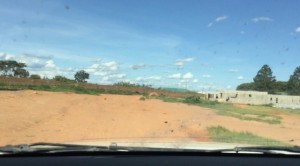 k.
k.
4:30 – We hit a dead end. Fudge buckets. Turn around.
4:40 – Back on the main road.
4:50 – Make a few turns and the paved road turns to dirt. The GPS says we are correct, so we carry on.
5:15 – The dirt road turns into a narrow road and eventually the car can’t fit. Valerie performs the most amazing reverse driving and backs up a ¼ mile of narrow road, dodging people, bricks, chickens, and wire fences.
5:20 – Back on the “main” dirt road. Phew. Assure myself that arriving at the airport before 5:45pm for an international flight will be fine.
 5:30 – Valerie screams “CHICKEN!” and I instantly think we will have to pay someone for driving over their chicken. But then I see ahead of us, a giant chicken statue in the middle of a roundabout. The last landmark before the airport.
5:30 – Valerie screams “CHICKEN!” and I instantly think we will have to pay someone for driving over their chicken. But then I see ahead of us, a giant chicken statue in the middle of a roundabout. The last landmark before the airport.
5:45 – We pull up to the airport, say our goodbyes and I speed walk (really speed walk) to the ticketing agent.
6:00 – I make it through security and to my gate. Only slightly concerned that the security agent didn’t once look at the x-ray machine screen and maintained eye contact with me the entire time. What could I have smuggled in my luggage?
2016 resolution – just be on time and no, you do not need dessert and coffee. I take that back, yes you do. Always.
IDSP Update: Salinas
By Anita Joshi; MPA student and IDSP16 fellow
Eating Locally, Thinking Globally
The month of January has been full of surprises of all types. I have been working with the organic farmers in Salinas to try and build more sustainability into the local food systems that most of us often take for granted. The farmers of course, being on the front lines, are fighting the battle from dawn till dusk. I call it a battle because that’s my impression of it at times, given how the many internal and external variables in small-holder farming function. Since I’ve started working with the farmers and produce distributers, I’ve learned that our food systems have become more complicated and less transparent over the past few generations. My grandparents were consumers in a totally different system than what it is now.
I started working with these farmers after they had gone through the farm worker-to-farmer program at the Agricultural and Land-Based Training Association. My idea was to develop a plan to help connect people that produce food with the people that consume the food. This was an alternative to the corporate tyranny that most farmers have to deal with because our food system has evolved to prioritize convenience for the consumer instead of social justice within the system. So I started working to create a produce co-op and identify ways to help connect the farmers to new market opportunities. My vision was that this would benefit everyone, from improving farmers’ access to markets to giving consumers access to the freshest, vine-ripened (as opposed to shelf-ripened) produce. One farmer, Mr. Gallardo, originally from Oaxaca, grew strawberries whose intense flavors reminded me of the old Skittles commercial; “Taste the rainbow!” (because I’m pretty sure rainbows taste like the sweetest organic produce known to man.) With this level of quality, one would imagine the price would be sky-high. The reality was at the season’s peak they sold for barely $1 per pound. Not nearly enough to even pay the workers or pay for the land, water, and other inputs.
After many conversations and “A-ha!” moments, I learned that one can never underestimate how strong of a pull convenience has for consumers. This is understandable; who doesn’t like convenience? But it seemed to me that even consumers who wanted out of this system didn’t have a lot of choices, or even the awareness of- or connections with- the local food producers. Yet, this was the modern food chain, and I was trying to dismantle it one organic tomato at a time. The corporate super markets have held on to the status quo with a clenched fist. Even when the system makes no sense to anyone.
A couple months after I first became acquainted with the farmers, I realized the upshot of all that I had been doing and trying to figure out. I had had a frustrating past few weeks with my consumer networks falling apart and realizing no amount of social media posting would change corporate hegemony, I vented to myself: “People! You’re rejecting the sweetest Salinas Valley Sun-riped rainbow heirlooms?! Why don’t you all just go to SaveMart and buy cardboard-flavored tomatoes!” Then one day, while walking downtown, someone I know on the street yells “Hey Anita! You got any organic tomatoes yet?” Surprised, I inwardly jump a little jump-for-joy at the sound of someone asking me about organic produce. “Soon!” I say. “I hear February or March, when the rain lets up maybe.” And I relish in the notion of someone seriously thinking locally and seasonally, instead of only thinking about Trader Joes. Maybe the beginning of a ripple effect. Or not. It was just one person. But that’s where it all starts.
IDSP Update: Monterey
By Lizzie Falconer; MPA student and IDSP16 fellow
It was 10 am and a small group of people had gathered outside Holland center. A motley crew: some in sweatpants and sneakers, others in suits and shined black shoes. Some wore knitted hats, others wore hijab. One woman was heavily pregnant, and another was pushing a baby stroller. Without context it would have been impossible to know who these people were and what they had in common. But it was us, the DPMI Monterey class of 2016, preparing for our group excursion to Point Lobos. We were excited, all of us had been cooped up in Casa Fuente 434 from 9-5:30 every day, learning and practicing development tools in small groups. The days were long and the work left my brain feeling gelatinous. I was excited for the excuse to be outside.
For many people, J-term meant traveling: airports, plane tickets, backpacks full of dry fit clothing. My fellow #IDSPers were headed all over the world. I felt a twinge of jealousy. I love to travel as much as the next MIIS student. But for me, my J-term plans were a little closer to home. Specifically, the greater Monterey County.
I stayed in Monterey for J-term because my first semester at MIIS almost killed me. I am not saying that in the hyperbolic, “I took 18 credits, never slept and lived off of espresso shots” kind of way. I actually did nearly die, in the form of water on the 101 that caused my car to hydroplane and flip into a ditch at sixty miles an hour. Three weeks later, I fell off my bike and tore ligaments in my shoulder. To quote the EMT who rushed over to render aid: “Maybe you should try walking.” Staying in Monterey for J-term was my way to heal. Give myself a chance to relax and recuperate. I would eschew the cross cultural learning opportunities for a later date, I thought to myself, when I felt healthier.
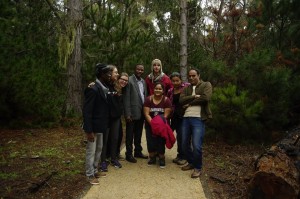
Once we were all gathered in front of Holland, we divided up among cars and drove to Point Lobos. The clouds hung low and heavy along the shoreline. Our group met inside the park, and then split up to hike different paths down to the shore. Everyone bounced around with excitement, chatting and joking, in five different languages.
The ocean was beautiful, the deep gray-blue it turns when a storm is coming. Pelicans soared above us, pausing midflight to dive bomb the waves. We stopped and took photos. Then ran to the next beautiful spot to take more photos. This was my fourth trip to Point Lobos, but being surrounded by so many people who were seeing it for the first time heightened my excitement. I ran around like a little kid, pointing out the marine life and plants to my fellow participants. Watching the waves, spending time with new friends, laughing at sea animals, this was the healing I needed.

Spoiler alert: You don’t need to leave the country to get an immersive learning experience. In fifteen days of DPMI, I talked with colleagues from Liberia, Pakistan, India, Afghanistan, Sudan, Ethiopia and Mexico. We shared meals and drinks and stories. I watched our group, once thirty-six individuals, come together to form our own community and culture. We had shared jokes, experience and a common vernacular. We hiked together, we laughed together, and we worked through arduous group projects together.
At the end of the three weeks I walked out of our classroom, Casa Fuente 434, like a weary traveler. Full of new ideas, fresh perspectives, and an appreciation for all of my colleagues who shared their stories with me.
IDSP16 Update: Chile
By Danny Pavitt; IPD Student and IDSP16 Fellow
Professor Jan Knippers Black mentioned many times that, in her opinion, the best way to learn is by full immersion. I thought I understood this concept before I left for Chile a little over two weeks ago, but back in the comforts of my Dallas hotel room (thanks, Storm Jonas), I admit that perhaps I didn’t fully comprehend “full immersion” in the same way I do now.
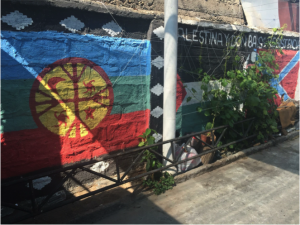 The truth is that I could have sat in my room, Google searched “Mapuche”, or “Judge Juan Guzmán”, or “Augusto Pinochet”, and learned a lot about each one. However, as is all-too-often the case in class, “learning” would occur but I would eventually lose sight of details that filled those facts with life.
The truth is that I could have sat in my room, Google searched “Mapuche”, or “Judge Juan Guzmán”, or “Augusto Pinochet”, and learned a lot about each one. However, as is all-too-often the case in class, “learning” would occur but I would eventually lose sight of details that filled those facts with life.
Enter StoryTelling.
In our two week tour of Chile that included the high-rise-filled city of Santiago from the peaks of Cerro San Cristóbal, the mountainous region of Temuco and the beautiful, bug-infested (inside joke. Not really infested) coast of Valparaiso, we talked to people that had been affected by the 17-year dictatorship in many different ways. We very quickly and often-abrasively learned that there are certain groups that continue to be affected by a government that still follows the rules of a constitution created by Pinochet, rife with over-privatization and complete lack of consideration for the rights of the “underprivileged” (in parenthesis because this is a word created by Western culture and isn’t applied in the same way by some communities we met).
There was an uncertainty I felt before leaving to Chile regarding what it was that we’d actually be doing down there, but it was enough for me to know that I’d be able to practice some Spanish and be a blank canvas, ready to be colorfully and impartially painted by knowledge of Chilean political history and the Mapuche indigenous people that fight the government for the rights to their native lands every day. What I got was much more, having the unique opportunity to listen to the stories of the people that had experienced beauty and conflict for many years.
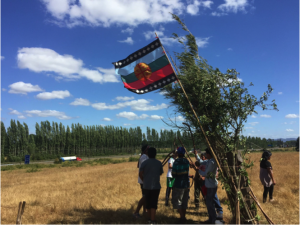 We looked Juana Calfunao in the eyes and listened to the beautiful things she had to say about the importance of living in harmony with the earth and thanking it for everything we take from it, and were given a brief opportunity to feel, deep-down, what it was like for her each day on her land. We listened to José Montalva Feuerhake, the Governor of the region where many Mapuche communities live, who said things that we needed to hear because they represented the other side of a story we hadn’t heard much of yet, even though everything he said seemed a little evading and naively optimistic. And we heard the story of a warrior, Polo Lillo, who is from La Victoria, a community on the outskirts of Santiago that was established by a group of people that went against the dictatorship and whom continue to fight for democracy through equal dissemination of information (radio, television, workshops, etc).
We looked Juana Calfunao in the eyes and listened to the beautiful things she had to say about the importance of living in harmony with the earth and thanking it for everything we take from it, and were given a brief opportunity to feel, deep-down, what it was like for her each day on her land. We listened to José Montalva Feuerhake, the Governor of the region where many Mapuche communities live, who said things that we needed to hear because they represented the other side of a story we hadn’t heard much of yet, even though everything he said seemed a little evading and naively optimistic. And we heard the story of a warrior, Polo Lillo, who is from La Victoria, a community on the outskirts of Santiago that was established by a group of people that went against the dictatorship and whom continue to fight for democracy through equal dissemination of information (radio, television, workshops, etc).
Listening to these people gave me perspectives and energy to feel life as they live, changing my definition of “full immersion” forever. At the constant satisfaction of all 5 of my senses, I now understand these issues better than I ever could have from a screen in my room, with mountains of information still left to learn.
Processing and personal debriefs will continue through the rest of this semester, especially as I begin to develop a story to represent some part of my time in Chile. I appreciate the journey I went on personally and as a part of a sizable group.
Side note: San Diego -> Dallas: 3 hours. Dallas -> Santiago: 9.5 hours. Santiago -> Temuco (by bus): 10 hours. Temuco city center -> Small Mapuche community: 40 mins. Sitting on a wooden bench on a ranch listening to a Mapuche man talk about the disgraces of Donald Trump: humorously embarrassing. #miischile2016
IDSP16 Update: Mexico City
by Tom Stagg; MPA student and IDSP16 Fellow
“You need to go to Chapultepec Castle while you’re here.” I heard that from my airbnb host, and then from one of her friends.
I was a Latin American studies major in undergrad, which included multiple history courses. During those classes, I learned of events such as the Mexican-American War and the French occupation of Mexico. I should have considered my Mexican history knowledge when I received the suggestions to visit the castle; the “castle,” as I thought about it. I all but made air quotes. I pictured a modest building, certainly old, and probably made of stone, leading people to call it a castle. I’ve seen buildings that are smaller than a typical McMansion, but happen to be eccentric or hidden in a forest and therefore get the title, “castle.”
The castle is in Chapultepec Forest (twice the size of Central Park), where a zoo, the National Museum of Anthropology, Museum of Modern Art, theme park and other attractions are also located. I like walking, and with the variety of options, I decided that I could spend an afternoon in the park and pass by the castle to let people know I had seen it.
I went on a Saturday afternoon. From the metro station, I strolled through the taco and torta stands, the juice and candy carts, the toy and sunglasses vendors , the balloon artists and the face painting booths, until I was under the shadow of the castle, which sits on a hill on the east side of the park.
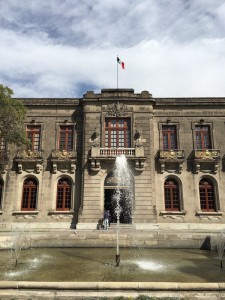
Chapultepec Castle is a castle. Sorry, Leslie! (My undergrad advisor who is a colonial Latin America specialist.) It looms over the park (stone/masonry as I had guessed), 220 feet tall, with fortress walls, floor to ceiling windows on the upper floors, and turrets. Once I saw that it deserves to be called a castle, I conceded that I had to walk all the way up to it and at least see the surrounding grounds. At the bottom of the hill, a sign announces that admission is 65 pesos, or the equivalent today of approximately $3.50. I considered that if I was impressed enough after the walk up the hill, I would pay the fee and go inside. The ramp that leads up to the castle is almost 1/2 a mile long. There is the option of a motorized cart for a fee, but most people go on foot. Built into the castle walls are sculptures, fountains, and gardens.
I decided that I was i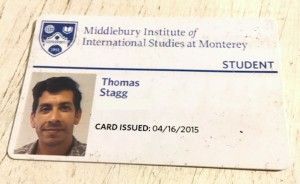 nterested enough to go inside, so I joined the line which was about 40 people long. A minute into the wait, a man came down the line calling for “children under 13, adults over 60, students and teachers” who get free admission. No one identified themselves as fitting any of those categories, and he called out again. “niños menores de trece años, adultos mayores de sesenta años de edad, estudiantes, profesores!” I took a half-step out of the line and asked if college students count. “You bet!” he said, and he directed me to skip the line. I showed my MIIS student ID at the gate, and walked right in.
nterested enough to go inside, so I joined the line which was about 40 people long. A minute into the wait, a man came down the line calling for “children under 13, adults over 60, students and teachers” who get free admission. No one identified themselves as fitting any of those categories, and he called out again. “niños menores de trece años, adultos mayores de sesenta años de edad, estudiantes, profesores!” I took a half-step out of the line and asked if college students count. “You bet!” he said, and he directed me to skip the line. I showed my MIIS student ID at the gate, and walked right in.
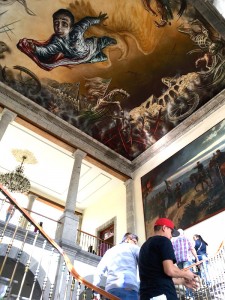
I walked right in to a real castle. It’s the only castle in North America that was actually lived in by royalty, Emperor Maximilian I (it gets complicated). It was the site of a battle in the Mexican-American war, when the Niños Heroes (Boy Heroes) defended the castle against the U.S. army, with one boy taking the Mexican flag and jumping from the castle to keep the flag away from the U.S. troops. The castle has been a military academy and a presidential residence. Now, it is the National Museum of History.
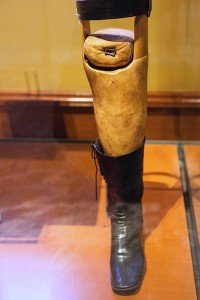
In addition to remembering lessons from Mexican history (and TX history: General Santa Anna’s wooden leg is on display), I learned a lesson about the value of carrying a student ID. Since that visit to Chapultepec Castle, I’ve gotten free admission to the National Museum of Anthropology, Museum of Modern Art (free on Sundays), the Museum of Fine Arts, and the Museum of Architecture. If it weren’t for the free entrance with student ID, I likely would only have visited the Museum of Fine Arts.

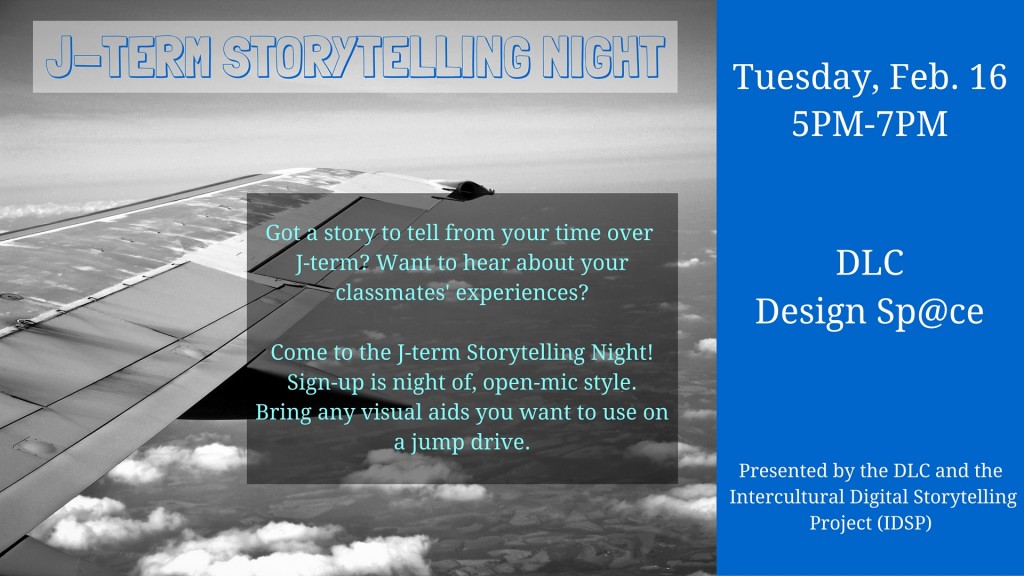
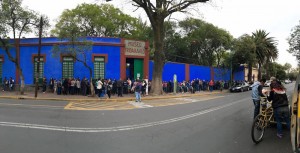


You must be logged in to post a comment.